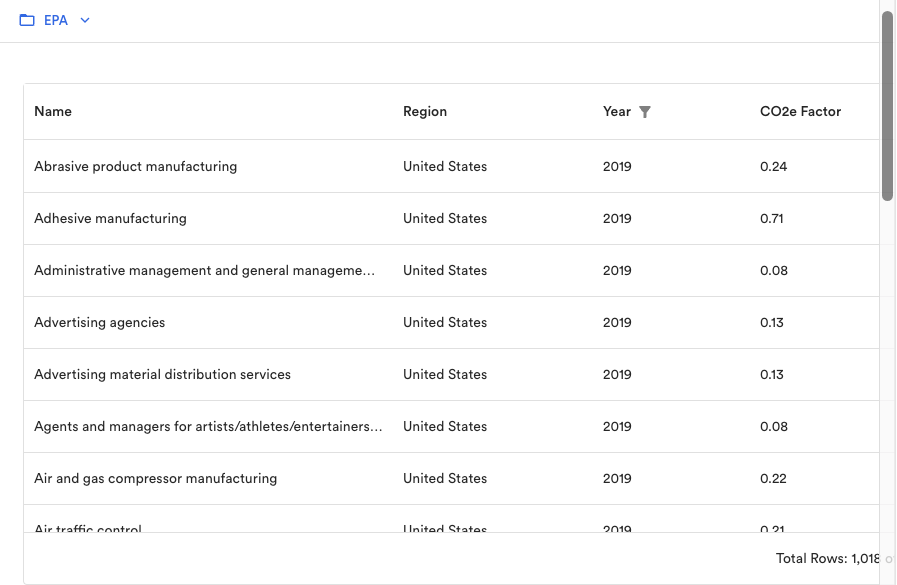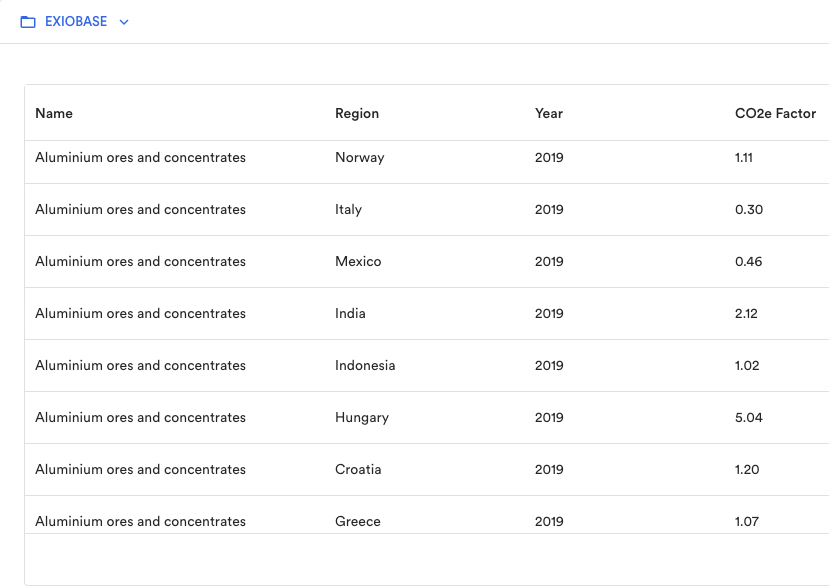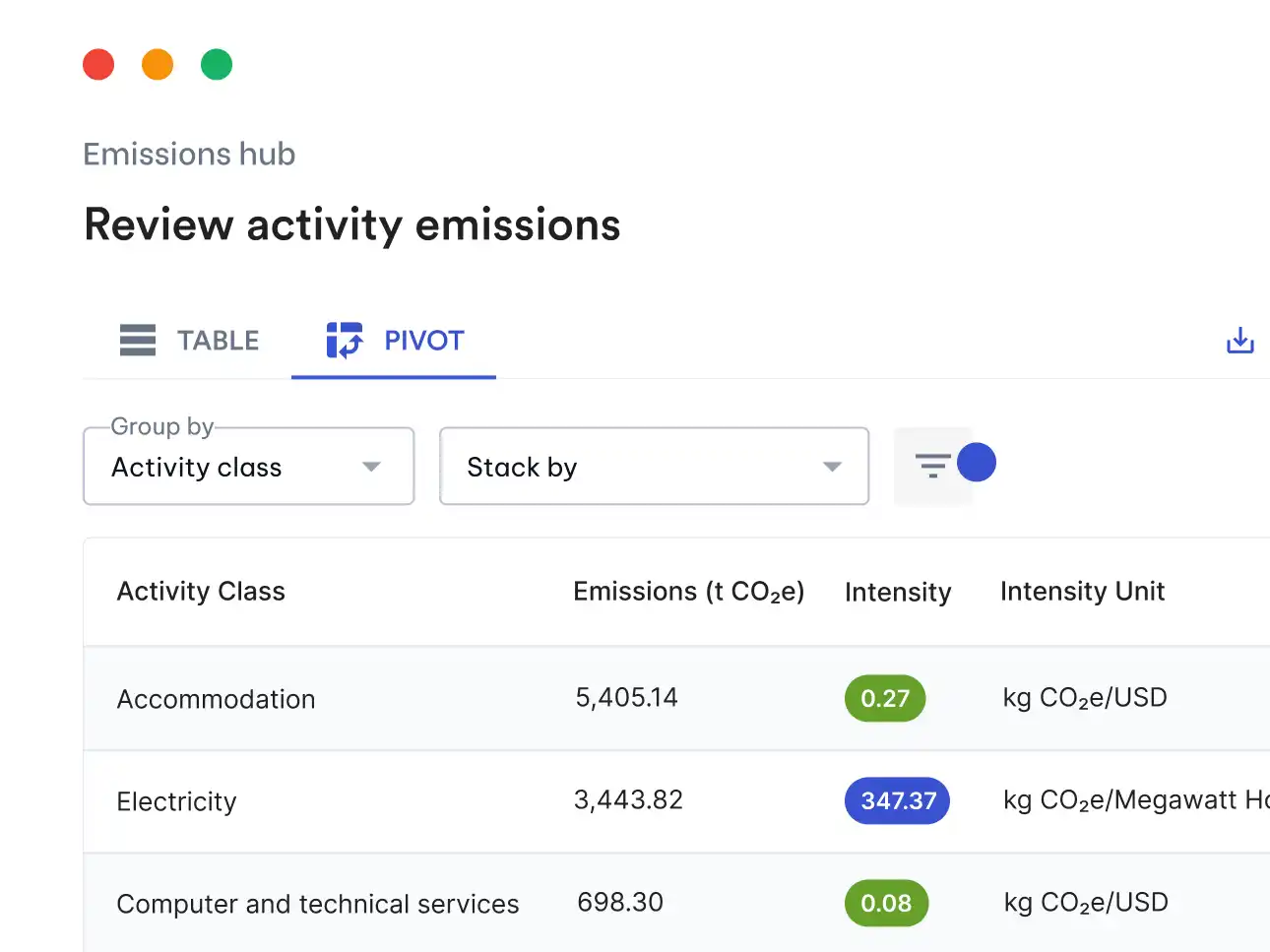Carbon accounting can be time-consuming, especially when done manually. While Avarni simplifies this process, we know many still rely on spreadsheets. This article offers guidance, and you can also explore our comprehensive list of global emission factor databases to find the data you need in one place.
When creating an emissions inventory for your clients to report to customers and regulators, it’s important to choose reputable, high quality factor database to ensure the inventory passes the scrutiny of a future audit, and reports the most accurate emissions for your client to take action on.
There are a few things that influence which database will be the most appropriate to use for your client’s data:
- Data available to analyze – This is by far the most important to evaluate prior to choosing the right database, since the same business activities can often have different representations. Eg: Distance data or fuel data for travel, spend data or amounts purchased for supply chain goods and services, etc.
- Nature of the client’s business – Are their operations centralised in one geography, or spread out across a large area of the globe? Are they an energy producer or a retailer of with most of their activities in the supply chain?
- Reporting needs – Are they required to use primary data for certain categories, such as in CSRD, or is secondary data sufficient?
- Client goals – Do they want the most accurate footprint, or the lowest footprint, or both? There is more than one valid way to create an inventory due to the range of databases out there, so knowing what your client wants is key.
Examples
Retail client in the US with most of their activity in the supply chain and distribution domestically
The main categories of emissions will be purchased goods and services, upstream transportation and distribution, and energy use for facilities and retail sites that are owned/operated by them.
To get a baseline for PG&S, it would be most appropriate to use the EPA EEIO factors, since they are US specific, and also very granular (with 1,018 categories available to match to).

There are also comprehensive energy grid factors available in the EPA database, which would be appropriate to apply to energy use at its various facilities.
The EPA also has factors available for use for transport in the form of mobile combustion factors (such as Motor Gasoline & Diesel Fuel) and distance factors (such as Passenger Cars, Light-Duty Trucks) – but if an appropriate factor is not available, BEIS has distance based factors for different types of trucks & air freight that can be used too.
Energy client that produces their own electricity in Argentina
The primary source of emissions for this type of client would be Scope 1, for the fuel sources they burn to generate electricity. In Argentina, the primary sources of electricity are natural gas and oil.
However, Argentina does not have a comprehensive emission factor database available from its government. But since the emissions from the same type of fuel burnt anywhere in the world are likely to be similar, we can safely use a different database, such as the EPA, to measure these emissions, even though they are not specific to Argentina.
Small/medium sized manufacturer looking to report the lowest footprint that supplies glass to a retailer
This manufacturer is required to comply with a request on a competitive RFP issued by a retailer to provide emissions data, and wants to report the lowest footprint with a valid methodology.
Different factor databases are likely to end up with a different emissions number for the same inventory, even if the methodology for both is valid. For example, the EPA has a factor for Glass product manufacturing made of purchased glass in 2019 with a value of 0.49 kg CO2e per USD.

However, if you used EXIOBASE, the most appropriate factor to use would be Glass and glass products, which has a value in 2019 for the US of 0.60 kg CO2e per USD.

Both options would be valid and pass an audit, but the emissions for this product would be 22% higher when using EXIOBASE instead of EPA – so using EPA would align more closely with the goals of the manufacturer.
An even more accurate inventory, that may end up having the lowest footprint, could be created using an activity based factor database (such as ecoinvent) instead of spend based.
Electronics manufacturer based in Europe with global supply chain seeking an initial baseline
With a global supply chain, using region & country specific emission factors will be critical in order to build a meaningful, credible emissions reduction plan, and understand where certain procured materials are more emissions intensive.
Even if the manufacturer is buying many different types of components from suppliers around the world, the need to understand the emissions intensities across different regions requires use of a database such as EXIOBASE, which has spend-based emissions factors for around 150-200 unique goods & services across 44 countries and 5 broader regions, to ensure coverage where country specific factors aren’t available.

This would enable the manufacturer to see that the emissions intensity of Aluminium sourced from Hungary is 320% higher than sourcing the same material from Croatia, allowing them to evaluate the costs of switching their supply of this material to Croatia to lower their emissions for this material & show the regulator they have a credible plan to decarbonise.
Finding the right database
There are many freely available databases, published either by government or industry bodies, that are widely used for emissions inventories today. Here are some of the most popular:
There are also some licensed databases that are available for use, particularly for categories such as purchased goods and services with activity based data instead of spend based data:
- ecoinvent
- IEA (International Energy Agency)
- CEDA
Other databases can be found by searching online or on government websites, but most calculations can be done using the databases above.
Applying the right factors from a database
Once you have chosen the emission factor databases you will use for your client’s inventory, you will need to apply the factors to their business activity data. For a detailed guide on how to do this, you can refer to our article: How to use emission factors to build a carbon inventory from business activities.
Summary
To choose the right database or combination of databases to apply to your client’s business activities to create an emissions inventory, you need to:
- Consider the data available (activity, distance data, spend), nature of the client’s business (type of product created, global supply chain, operations limited to a certain region), reporting needs (requirements of regulation client falls under), and goals (qualify for RFPs, align with brand purpose).
- Find the right databases based on the considerations above.
- Apply the emission factors to the business activities
Want to find the right databases without needing to manually perform all the above steps? Avarni includes all the open-source databases mentioned here in one place, and can help by:
- Showing you all the emission factor databases, and associated factors, applicable to a certain region, country, or even address (eg. What factors can be applied to a distribution centre in Amsterdam, Netherlands?)
- Filtering out databases automatically that are not applicable based on the type of data your client has available (eg. EXIOBASE cannot be applied to energy units).
- Applying comparisons of different databases to the same business activity data to compare the final carbon footprint (eg. EXIOBASE vs EPA).
- Automatically apply the right factors from a database using AI to get the most accurate, auditable inventory that will pass the scrutiny of regulators & large customers.
Contact us to explore how we can help you unlock scale and capacity for your teams performing carbon measurement & net zero advisory engagements, and make your consulting services stand out from the crowd. Or, try Avarni free for 14 days by signing up below!





